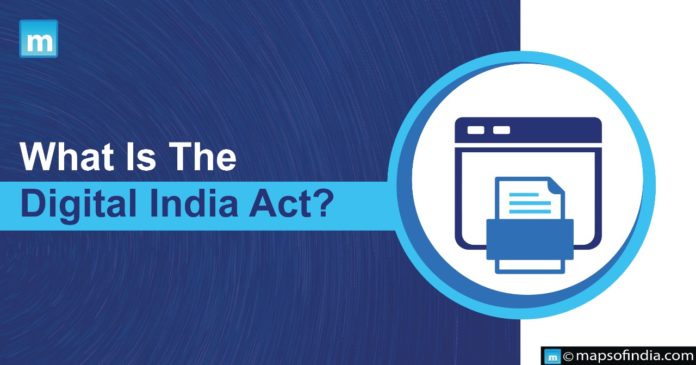The Ministry of Electronics and Information Technology (MeitY) is set to replace the existing IT Act 2000 with a new and more important act, Digital India Act (DIA). It consists of guidelines related to cybercrime. The main objective of this act is to prevent any mishappening with women and children. During the inauguration of Bennett University’s Centre for law and computing Technology, IT Minister Rajiv Chandrashekhar informed about the digital India Act. He stated that New India requires an updated and more contemporary act.
What is Digital India Act?
The Digital India Act (DIA) will cover everything related to social media platforms such as Facebook, Twitter, Whatsapp, and Instagram, Over The Top (OTT) platforms like Netflix, google prime, and other online apps trap personal data. Web3 applications, such as metaverse and blockchain, are also included.
Any OTT platform, such as Netflix or Amazon, which violate content guidelines in a manner, that Mis-inform or incites violence will fall under the Digital India Act purview.
Information Technology Act 2000
The Information Technology Act was launched in 2000. It is also known as ITA-2000 or the IT Act. The Indian Parliament passed this act on October 17, 2000. The basic and strongest law in India deals with cybercrime and electronic commerce.
The act also was amended with various sections of the Indian Penal Code, 1860, then the Indian Evidence Act, 1872. The act was amended with banks’ policies, such as the Banker’s Book Evidence Act of 1891 and the Reserve Bank of India Act of 1934
The Information Technology (IT) Act 2000 protects internet users from online thefts, online confiscation of assets, exposure to obscene content and monetary loss.
Why replace the act?
1. Unupdated
IT act was launched in 2000, which is 22 years ago. Since it was enacted, the internet world has changed in many ways. Many apps, websites, and OTT platforms got introduced. OTT platforms such as Netflix, launched in 2016, and Twitter, established in 2006, do not come under IT Act. The replaced digital India Act was launched to enable them in IT Act.
Similarly, there were no digital financial or other digital crime concepts. After 2000, all digital and financial crimes will come under the Digital India Act. In case of any crime, the digital India Act will take action and grant punishment according to the digital crime.
Apart from this, the most crucial factor of the digital India Act is that it safeguards child and women’s safety along with regulations against spreading misinformation and online harassment.
2. Content guidelines
Digital India Act is the first act, including OTT platforms like Netflix and Amazon Prime. This act will monitor OTT content and control the spread of misinformation.
Till now, the OTT platform was a self-regulatory system. Under the new digital regulatory framework, digital OTT platforms will face regulatory scrutiny.
To limit the misinformation, the government will issue specific “Content guidelines” to which every creator has to adhere.
3. Guidelines for new technologies
The digital India Act will also bring some basic guidelines for technology, such as metaverse and blockchain. The current IT Act is not up to date, failing to keep an eye on the new technologies. The new Digital India Act will also consist of guidelines related to Cryptocurrency.
Support plans of the Government of India
The Government of India (GOI) is establishing a legal and executive body to support India’s digital plan. The four support plans are :
- The data protection law
- Digital India Act
- Data governance policy Framework
- The cyber security policies and guidelines




